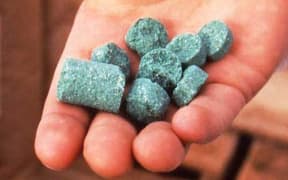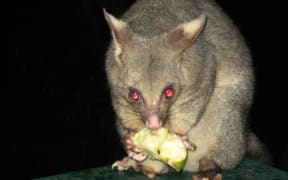1080 poison will be dropped over hundreds of thousands hectares this winter as part of the largest ever pest control operation in New Zealand.

Photo: RNZ / Cole Eastham-Farrelly
The government has today announced $20.7 million of new operating funding as part of the 2015/16 budget.
Conservation Minister Maggie Barry said the country's largest pest control operation was being conducted to fight against the rise in the pest population expected over the winter months which threaten native wildlife.
"We're expecting in excess of 30 million extra rats so it is biblical proportions of plagues of them and then following on from that hundreds of thousands of stoats, so we get in early, as soon as we start in July with the 1080 drops we will knock out those rodent populations and not let them get to those predicted levels."
The move is part of what is known as the Battle for our Birds programme which started in 2014.
The Department of Conservation (DoC) drops biodegradable 1080 by air over large areas of rugged terrain to knock down rats, stoats and possums. Trapping and other ground-based pest control methods are also used.
Heavy forest seeding, or mast, is anticipated to increase the pest population. Around a million tonnes of beech seed will drop to the forest floor this autumn providing a bonanza of food for rats and allowing their population to boom.
Ms Barry said that DoC scientists had confirmed the seed fall predicted last year had happened.
"All the indications are that this mast is on a similar scale to the previous event in 2014, which saw the launch of Battle for our Birds, though with a slightly different distribution as more seedfall is predicted in the southern South Island."
The problem with the pests comes from an increase in rats from the readily-available food source, which will increase the number of stoats which feed on the rats, Ms Barry said.
"Once the seeds germinate and the food source disappears in early spring, the plague of millions of starving rats and tens of thousands of hungry stoats will turn on native wildlife, bringing disaster if we do nothing."
Vulnerable species will be brought to the brink of localised extinction with whole populations wiped out if nothing is done according to DoC, and the pest plague would also kill millions of other birds, native insects, bats and reptiles.
As part of the 2016 Battle for our Birds programme DoC will ramp up pest control by 500,000 hectares, to cover more than 800,000 hectares of land, aerial 1080 operations will be backed by trapping and ground control programmes.
Pilot projects will also test the effectiveness of using self-resetting traps to keep pests permanently out of an area following a 1080 drop.
Priority will be given to protecting vulnerable populations of great spotted, brown and tokoeka kiwi, kaka, kea, whio, mohua, kakariki/orange-fronted parakeet, rock wren, long and short tailed bats and giant snails.
While the areas given priority will be Fiordland, Otago, South Westland, North Canterbury, Kahurangi, the lower North Island, Taranaki and Tongariro.
Research from DOC's 2014 Battle for our Birds programme showed breeding success rates in areas treated with 1080 were far greater than in areas with no control.
Ms Barry said biodegradable 1080 remained the safest, most efficient and effective method of pest control in the rugged backcountry of New Zealand.
"We must use it if we are to protect our precious native creatures from the effect of the beech mast - we simply can't allow ill-informed, unscientific campaigns to cause us to back away from what we need to do to save our taonga species."



